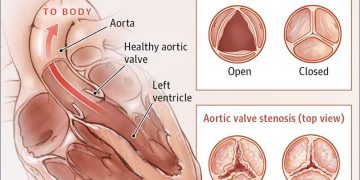What’s The Difference Between Chow Mein And Lo Mein?
China’s rich agricultural history extends beyond its renowned rice production, as it stands as both the largest producer and consumer of wheat globally. The expansive Chinese landscape, however, is not universally suitable for wheat cultivation. The fertile North China Plain emerges as the wheat farming haven, shaping the noodle-centric cuisine of Northern China. In contrast, Southern China’s culinary landscape revolves around rice, reflecting regional agricultural nuances.
Today, Chinese culinary diversity permeates American dining. Whether navigating the lantern-lit streets of Manhattan or exploring the offerings at Panda Express, staples like chow mein and lo mein abound. “Chow mein” translates to “fried noodles,” while “lo mein” means “tossed noodles,” encapsulating a myriad of variations under these deceptively simple names. Unravel the nuances that distinguish them.
Let’s start with the noodles.
The foundation of distinguishing between chow mein and lo mein begins with the noodles themselves. Both dishes feature Chinese egg noodles, which share a common origin but undergo different preparations.
Chow Mein Noodles: “Chow mein” translates to “fried noodles,” and true to its name, these noodles are often pan-fried or deep-fried until they achieve a crispy texture. The frying process imparts a delightful crunch to the noodles, creating a contrast in texture when combined with the other ingredients in the dish.
Lo Mein Noodles: On the other hand, “lo mein” translates to “tossed noodles.” Unlike chow mein, lo mein noodles are boiled or steamed to a soft and supple consistency. This preparation method yields noodles that are tender and soak up the flavors of the accompanying ingredients in the dish.
So, in essence, the primary divergence lies in the texture of the noodles — crispy for chow mein and soft for lo mein. Understanding this fundamental distinction sets the stage for appreciating the nuances of these popular Chinese noodle dishes.
Then there’s the difference in cooking method.
Beyond the textural contrast of the noodles, another key factor distinguishing chow mein from lo mein is the cooking method employed for each dish.
Chow Mein Cooking Method: As the name suggests (“chow mein” translates to “fried noodles”), the hallmark of chow mein is its frying technique. After boiling or steaming the egg noodles, they are pan-fried or deep-fried until they become crispy. This frying process not only imparts a distinctive crunch to the noodles but also adds a depth of flavor as they absorb the oils and seasonings during cooking.
Lo Mein Cooking Method: Conversely, “lo mein” translates to “tossed noodles,” reflecting a gentler cooking approach. After boiling or steaming, the noodles are stir-fried or tossed in the wok along with various ingredients such as vegetables, meat, and a flavorful sauce. The focus here is on a softer, more noodle-centric texture, allowing the noodles to absorb the savory essence of the accompanying components.
In summary, the cooking method plays a pivotal role in shaping the overall texture and flavor profile of each dish — the crispy allure of chow mein versus the tender appeal of lo mein.
So, what’s the best way to prepare chow or lo mein?
The preparation of chow mein and lo mein involves distinctive steps to highlight their unique characteristics. Here’s a brief guide for each:
Preparing Chow Mein:
Ingredients:
- Chinese egg noodles
- Assorted vegetables (like bok choy, carrots, and bean sprouts)
- Protein of choice (chicken, beef, shrimp, or tofu)
- Soy sauce, oyster sauce, and other desired seasonings
- Garlic and ginger for flavor
Instructions:
- Boil or steam the noodles: Cook the Chinese egg noodles according to the package instructions until they are just tender.
- Stir-fry the protein: In a wok or large skillet, stir-fry your choice of protein until fully cooked.
- Add vegetables: Add the assorted vegetables to the wok and stir-fry until they are crisp-tender.
- Fry the noodles: In a separate pan, heat oil and fry the boiled or steamed noodles until they become crispy and golden brown.
- Combine and season: Add the crispy noodles to the wok with the protein and vegetables. Season with soy sauce, oyster sauce, garlic, ginger, or other desired seasonings. Toss everything together until well combined.
- Preparing Lo Mein:
Ingredients:
- Chinese egg noodles
- Assorted vegetables
- Protein of choice
- Soy sauce, oyster sauce, and other desired seasonings
- Garlic and ginger for flavor
Instructions:
- Boil or steam the noodles: Cook the Chinese egg noodles until they are soft and fully cooked.
- Stir-fry the protein: In a wok or skillet, stir-fry the chosen protein until done.
- Add vegetables: Introduce assorted vegetables to the wok and stir-fry until they reach the desired tenderness.
- Toss with noodles: Add the boiled or steamed noodles to the wok, tossing them with the protein and vegetables.
- Season to taste: Season the dish with soy sauce, oyster sauce, garlic, ginger, or other preferred seasonings. Toss everything together until the noodles are well coated and infused with the flavors.
- Whether you prefer the crispy allure of chow mein or the soft tenderness of lo mein, adjusting the cooking techniques and seasonings according to your taste will ensure a delicious and satisfying result.
Final Thought
In the realm of Chinese cuisine, the distinction between chow mein and lo mein lies not only in the texture of their noodles but also in the culinary techniques applied. Chow mein, with its crispy noodles achieved through frying, offers a delightful contrast to the tender composition of lo mein’s boiled or steamed noodles. Each dish embodies a unique interplay of flavors and textures, inviting a diverse array of ingredients to create a harmonious culinary experience. Whether you crave the crunch of chow mein or the comforting softness of lo mein, exploring these classic Chinese noodle dishes promises a journey of culinary discovery and palate satisfaction.
Follow – https://healthhuff.com for More updates




































